Gyeongju Bird Park (경주 버드파크)
2025-06-12
74-14 Bomun-ro, Gyeongju-si, Gyeongsangbuk-do
Gyeongju Bird Park, located in the Bomun Tourist Complex, is a bird-themed park designed in the shape of a bird's nest. It houses around birds of different species, along with various plants and flowers. Visitors can interact with the birds and enjoy hands-on experiences at the educational center. The first floor features an ecological experience hall with birds, reptiles, fish, and small animals, while the second floor includes exhibition halls and outdoor experiential spaces.
Gyeongju East Palace Garden (Donggungwon) (경주 동궁원)
2016-03-04
74-14, Bomun-ro, Gyeongju-si, Gyeongsangbuk-do
+82-54-779-8725, +82-54-777-7200
Gyeongju East Palace Garden re-creates Korea's first zoo and botanical garden in the image of a modern Donggung Palace and Woliji Pond. The garden is comprised of botanical garden, agricultural experience facility and Bird Park. In particular, the greenhouses in the botanical garden are built with the design of traditional building from the Silla period but are made entirely of glass, providing this garden with a unique atmosphere.
Hallyeohaesang National Park (Namhae District) (한려해상국립공원(남해))
2021-01-18
Namhae-gun, Gyeongsangnam-do
+82-55-860-5800
Well-known for its uncontaminated clear waters, Hallyeohaesang National Park was the country's first national marine park. The park is divided into six sections, spanning over the regions of Jisimdo Island in Geoje to Odongdo Island in Yeosu. The total area is 535.676 ㎢, of which 76% consists of ocean water. The park is visited by over one million tourists every year for its scenic landscape and beautiful waters.
Jeoksangsan National History Archives Site (적상산사고지)
2024-04-07
960, Sanseong-ro, Muju-gun, Jeonbuk-do
+82-1899-8687
During the Imjin War (1592-1598), many of the National Archives in the capital and the surrounding area were burned down. After this, the archives were duplicated and stored in a variety of locations thoughout the county. The National Archives of Jeoksangsan Mountain was founded in 1614, when important national archives were moved from Myohyang Confucian Academy, with others being added in 1641. This national archives site served a very important role throughout over 300 years of Korea’s history, until it was closed by the Japanese during the Japanese occupation.
Sun Cruise Theme Park (썬크루즈 테마공원)
2020-04-01
950-39, Heonhwa-ro, Gangneung-si, Gangwon-do
+82-33-610-7000
Sun Cruise Resort is a cruise-shaped resort located on a cliff 60 meters above sea level. Surrounding the resort is an extensive park, with themed gardens and sculptures. The park offers an exquisite landscape with its large man-made lake and coconut trees. The resort also has a sculpture park that displays 30 sculptures and a jangseung (traditional Korean totem pole) park with 250 jangseung totems from Andong. Visitors can also stop for a cup of coffee at a train-themed cafe or a sailboat-themed cafe.
Gapyeong Baengnyeonsa Temple (백련사(가평))
2021-05-15
159-50, Saemgol-gil, Gapyeong-gun, Gyeonggi-do
+82-31-585-3855
Baengnyeonsa Temple is surrounded by mountains, as it is located off Yongmunsan, Myeongjisan, and Daegeumsan Mountains. On each side of the temple, one can also find Unaksan Mountain as well as Cheonmasan Mountain. In addition, just behind the temple are Chungnyeongsan Mountain and Seorisan Mountain.
This temple was built relatively recently, so the temple only has a few cultural treasures. However, as compared to the average temple in Korea, it is distinguished by its well-designed and refined architectures. The decorations in the temple are simple, with no overly vibrant colors nor complicated designs so as to help in seeking peace and inspiration.
The temple is also known for its hiking trails and beautiful scenery offered by the surrounding mountains.
Turtle Rock & Natural Wild Juniper Habitat (거북바위 및 향나무 자생지 (울릉도, 독도 국가지질공원))
2021-06-29
Taeha-ri, Ulleung-gun, Gyeongsangbuk-do
+82-33-791-2113
Turtle Rock was given its name for its rock formation that resembles the shape of turtles climbing out to the rock. The Turtle Rock is a volcanic rock that formed from the molten lava from Ulleungdo Island's early volcanic activity. Solidified lava flow as well as chilled margins can still be seen along the rock's slope. The western cliff of the rock is Tonggumi Village, where it serves as a home to wild juniper trees. On the northwestern side of the rock is Daepunggam Village, also a natural habitat for wild juniper trees. Both sites were designated as Natural Monuments for their significance. The juniper trees here are known to have a slower growth rate than those under normal condition due to rough winds.
Jaman Mural Village (자만벽화마을)
2024-04-07
1-10, Jamandong 1-gil, Wansan-gu, Jeonju-si, Jeonbuk-do
Jaman Mural Village is located in the ridge between Omokdae and Imokdae along the foot of Seungamsan Mountain’s Jungbawi Rock. Jeonju Hanok Village is also visible from the wide street. Although it is a fairly steep walk up to Jaman Village, visitors will be able to enjoy colorful murals painted on the buildings and walls along the way.
Abai Village Ferry (아바이마을 갯배)
2022-12-21
39, Jungangbudu-gil, Sokcho-si, Gangwon-do
+82-33-635-2003
Gaetbae (boat without engine) is an exotic means of transportation to cross the Abai Village at the mouth of Cheongchoho Lake. It is a rapid means of traveling between downtown Sokcho and Abai Village along the 50 m-long waterway. This small barge-style boat without an engine can be run by pulling the wire manually. When fixing the solid steel wire on both sides of the waterway and pulling it hard with a hook, a boat moves forward slowly. As there is no boatman, passengers need to work together to move the boat. It takes about 5 min to cross the water by boat. This unique experience still attracts many tourists to Sokcho. Furthermore, it is known as the filming location for the Korean TV drama Autumn in My Heart, so many tourists from Japan and China visit the place.
Someorioreum Volcanic Cone (Udobong Peak) (쇠머리오름(우도봉))
2021-07-22
Samyanggosumul-gil, Jeju-si, Jeju-do
+82-64-740-6000
Someorioreum Volcanic Cone is located on Udo Island, about 3.8 kilometers from Seongsanhang Port. The cone rises 100 meters and offers fantastic views of the surrounding area. The name means "cow's head," and comes from the name of the island, said to resemble a cow lying down. The island is only accessible from Seongsanhang Port, and it takes about 15 minutes by ferry.
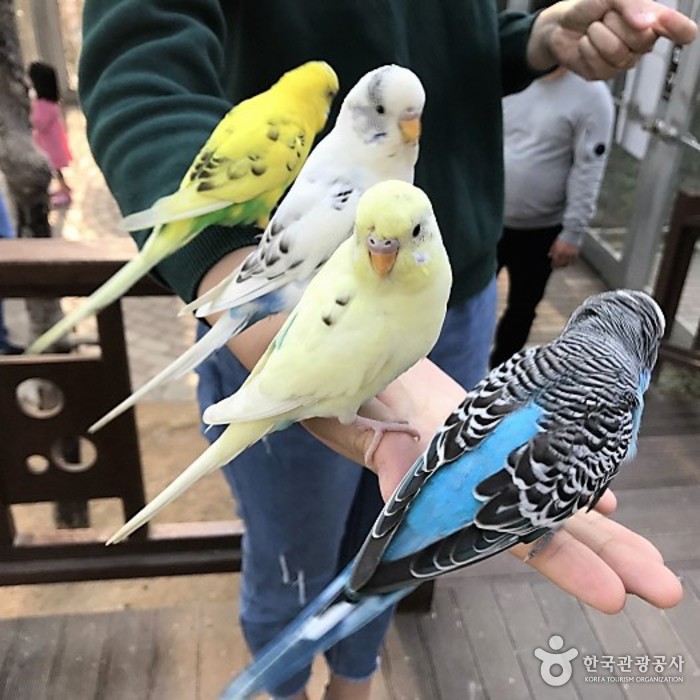
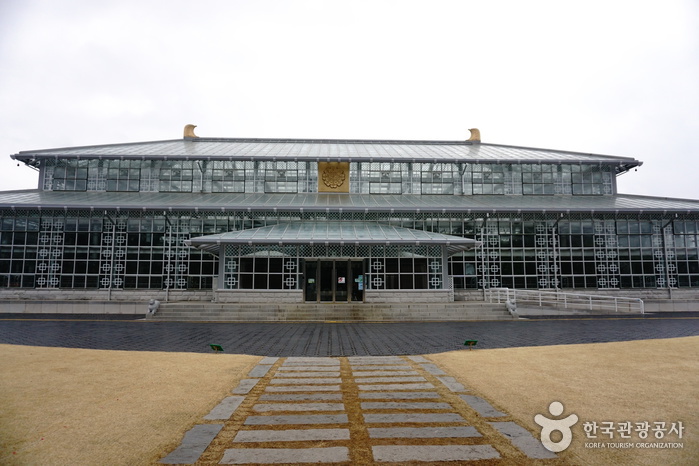
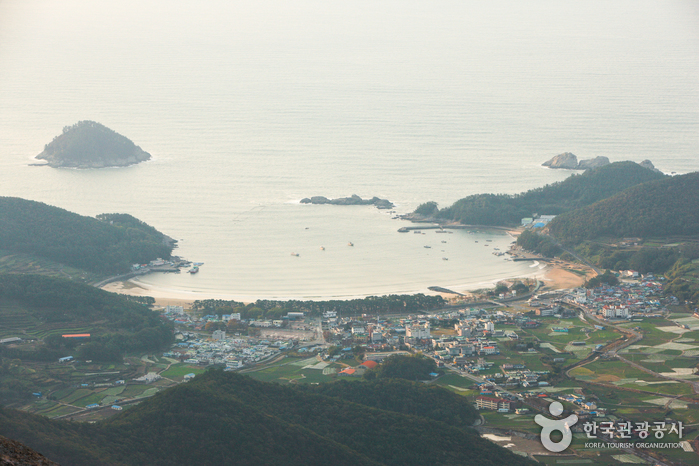
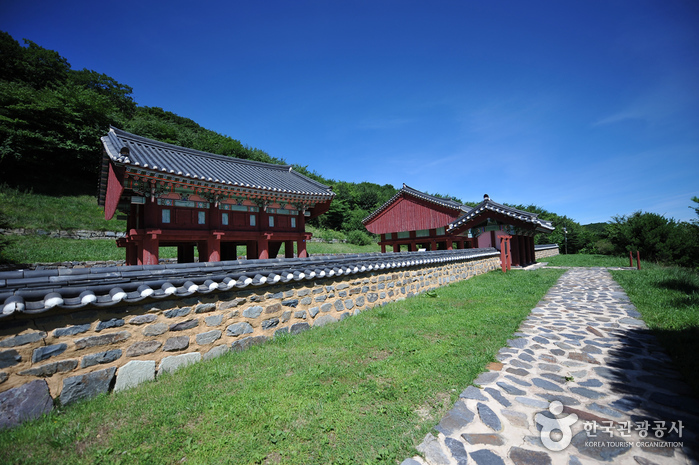
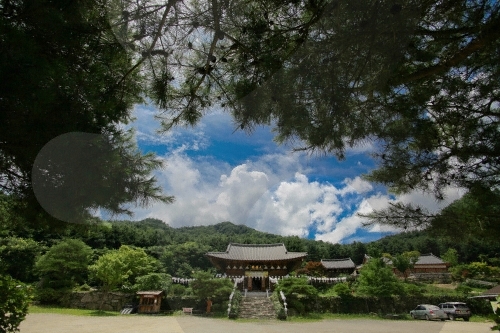
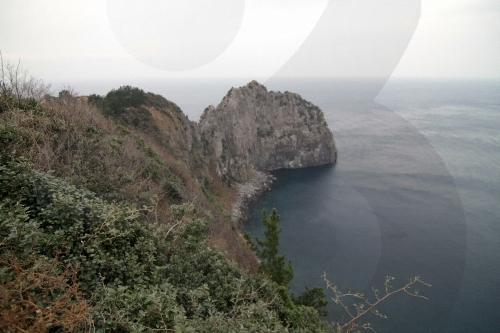

 English
English
 한국어
한국어 日本語
日本語 中文(简体)
中文(简体) Deutsch
Deutsch Français
Français Español
Español Русский
Русский